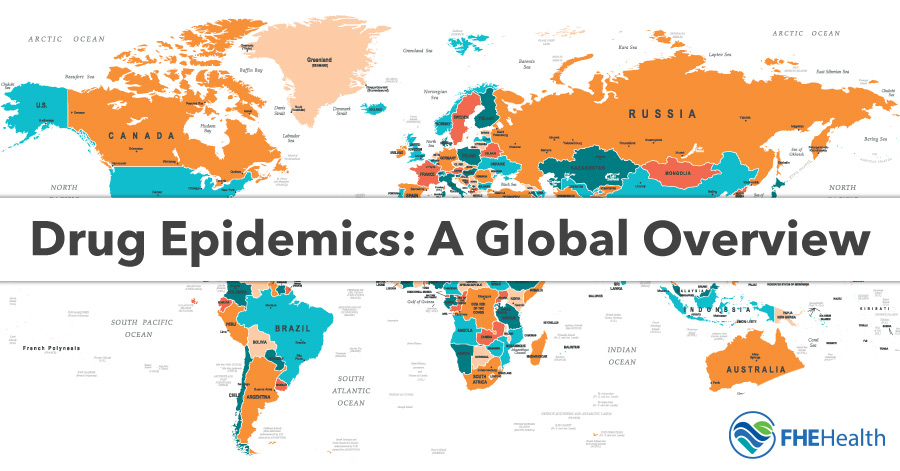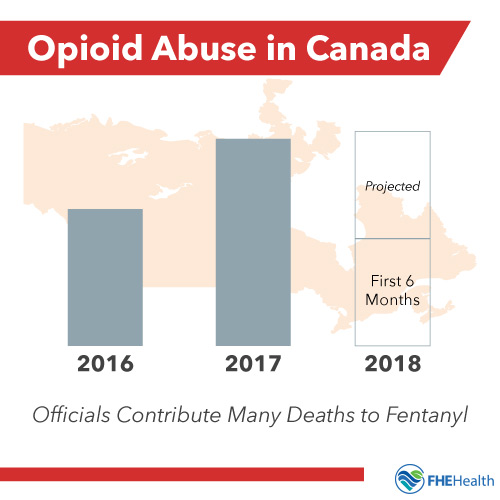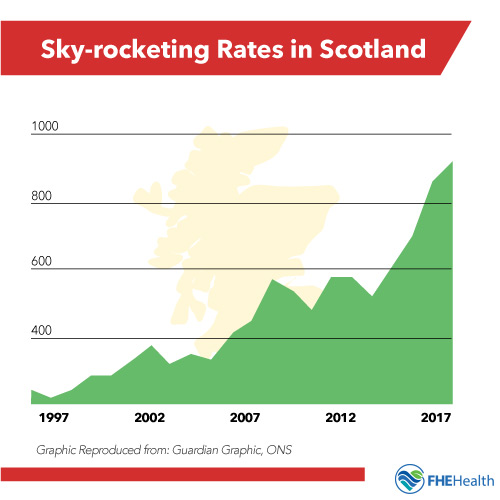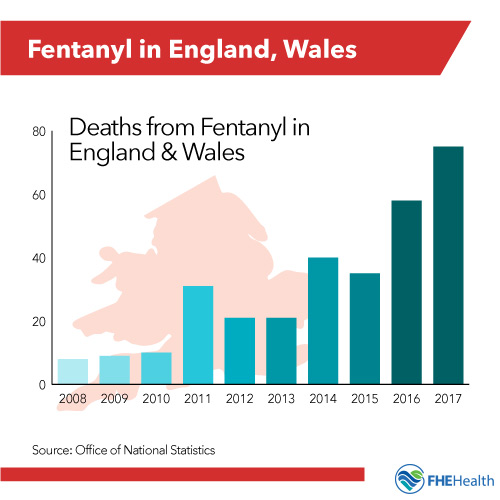
There’s no doubt about it – the United States has a serious drug problem as a whole, and the ongoing opioid epidemic has only added to our already grim statistics related to addiction issues.
The thing is that substance abuse knows no boundaries. Despite the lack of media coverage regarding addiction beyond our borders, the fact is that drug epidemics have, and do, impact millions of people around the world. After all, addiction isn’t an American issue – it’s a human issue.
Opioid Abuse Wreaks Havoc in Canada
 Unsurprisingly, our neighbors to the north have also been struggling to contain a growing opioid epidemic during the last few years, where close to 4,000 people died of opioid-related overdoses in 2017 alone, up 34 percent from 2016. During the first six months of 2018, there were 2,066 such deaths – that means the overdose rates have continued to spiral upwards.
Unsurprisingly, our neighbors to the north have also been struggling to contain a growing opioid epidemic during the last few years, where close to 4,000 people died of opioid-related overdoses in 2017 alone, up 34 percent from 2016. During the first six months of 2018, there were 2,066 such deaths – that means the overdose rates have continued to spiral upwards.
This new national record was largely attributed to accidental overdoses involving fentanyl which is “flooding into Canada” from factories in southern China via shipping containers and non-descript envelopes sent through the mail. The situation is most dire in British Columbia along Canada’s west coast, where government officials warn that “drugs like cocaine, crack, ecstasy, meth, and heroin can be cut with drugs like fentanyl”, and that “people should be aware that drugs they get from anywhere other than a pharmacy or a hospital may not be what the dealers say or believes they are.”
Ukraine Leads World In Drug-Related Deaths
 According to statistics from the World Health Organization (WHO), Ukraine currently holds the dubious record of having the highest documented drug-related death rates in the world. As of 2017, there were 15.93 fatal overdoses per 100,00 residents in the Eastern European country that is currently the 32nd most-populated nation. By comparison, the United States ranks 5th in terms of worldwide OD rates.
According to statistics from the World Health Organization (WHO), Ukraine currently holds the dubious record of having the highest documented drug-related death rates in the world. As of 2017, there were 15.93 fatal overdoses per 100,00 residents in the Eastern European country that is currently the 32nd most-populated nation. By comparison, the United States ranks 5th in terms of worldwide OD rates.
Injection drug use in Ukraine not only drives the overdose rates, but it’s also closely linked to the continued prevalence of new HIV infections. In 2017, 13,000 people were diagnosed with HIV, and approximately 9,000 died from AIDS-related complications.
Adding to the drug epidemic in Ukraine is the fact that Russian involvement in eastern Ukraine and the annexation of Crimea under Vladimir Putin brought an abrupt halt to methadone treatment programs in many areas of the region. Methadone therapy is banned in Russia, and Yevgeny Bryun, Russia’s top narcologist, states that “methadone therapy is just a business” – one which Russian officials refuse to support.
Immediately upon annexing Crimea in 2014, Russia halted existing ‘drug replacement’ programs in the area, and officials are rumored to have burnt the remaining doses of methadone. This sudden shift in government policy is widely cited as one of the reasons why substance abuse remains rampant in the area.
Scottish Overdose Rates Double in Last Decade
 In Western Europe addiction also continues to take a dramatic toll, and Scottish officials are scrambling to find solutions to the growing drug death rates there.
In Western Europe addiction also continues to take a dramatic toll, and Scottish officials are scrambling to find solutions to the growing drug death rates there.
Recent statistics show that a record 934 people died as a direct result of drug use in Scotland during 2017 – that’s double the number of overdose deaths just 10 years earlier, and “two and a half times the rate UK-wide.”
According to government records close to 70 percent of Scottish overdose deaths involved victims over the age of 35, and one-third were over 45 years old. This upward trend is largely attributed to long-term drug addicts who became hooked on substances such as heroin and methadone during the 1980s and 1990s. It’s a demographic known locally as the ‘Trainspotting generation’ in reference to Irvine Welsh’s darkly comic novel and its film adaptation which followed a group of impoverished heroin addicts living in Edinburgh.
Fentanyl Drives Increase in Drug Deaths in England, Wales
 Across the pond, in England, drug overdose numbers are also on the increase. As in Canada, addiction experts in the UK attribute the 29 percent rise in 2017 deaths by drug use to the flood of cheap fentanyl being smuggled into the country from Chinese labs along with the drug trade on the dark web.
Across the pond, in England, drug overdose numbers are also on the increase. As in Canada, addiction experts in the UK attribute the 29 percent rise in 2017 deaths by drug use to the flood of cheap fentanyl being smuggled into the country from Chinese labs along with the drug trade on the dark web.
Deaths linked to cocaine use also rose in the region, while officials recorded a decline in overdoses linked to both heroin and morphine use. In fact, 2017 cocaine-related death rates set a record – they were the “highest since records began”, with drug abuse deaths being the highest in the north east of England, and lowest in London.
What About Asia, Africa, and Other Regions?
According to the 2017 World Drug Report produced by the United Nations Office on Drugs and Crime, “Globally, there are an estimated minimum of 190,000 – in most cases avoidable – premature deaths from drugs, the majority attributable to the use of opioids.” The study authors estimate that about 0.6 percent of the global adult population “suffer from drug used disorders” – their “drug use is harmful to the point that they may experience drug dependence and require treatment.”
The UN explains that in many developing countries injection drug users face a number of “negative health consequences” such as infection with Hepatitis C, HIV, and tuberculosis. A reported 12 million people inject illegal drugs on a regular basis worldwide, and one in eight IV drug users lives with HIV while over half test positive for Hep C.
Determining country-specific drug addiction rates is difficult in areas where drug use is under-reported due to political, moral, and religious norms such as in many Asian, African, and Eastern European countries. It’s entirely possible that other nations may be experiencing drug epidemics at a scale that mirrors the opioid epidemic here in the United States, but the lack of accurate statistics makes it difficult to draw these conclusions.
What is clear is the fact that opioid abuse is a global problem that transcends borders worldwide.
Need Help? Contact FHE Today
Here at FHE Health, we’re committed to providing world-class lifesaving treatment options for those who are impacted by substance abuse and mental health issues. Our friendly, experienced intake counselors are available to talk 24 hours a day, 7 days a week, 365 days a year when you’re ready to begin your journey towards recovery.






